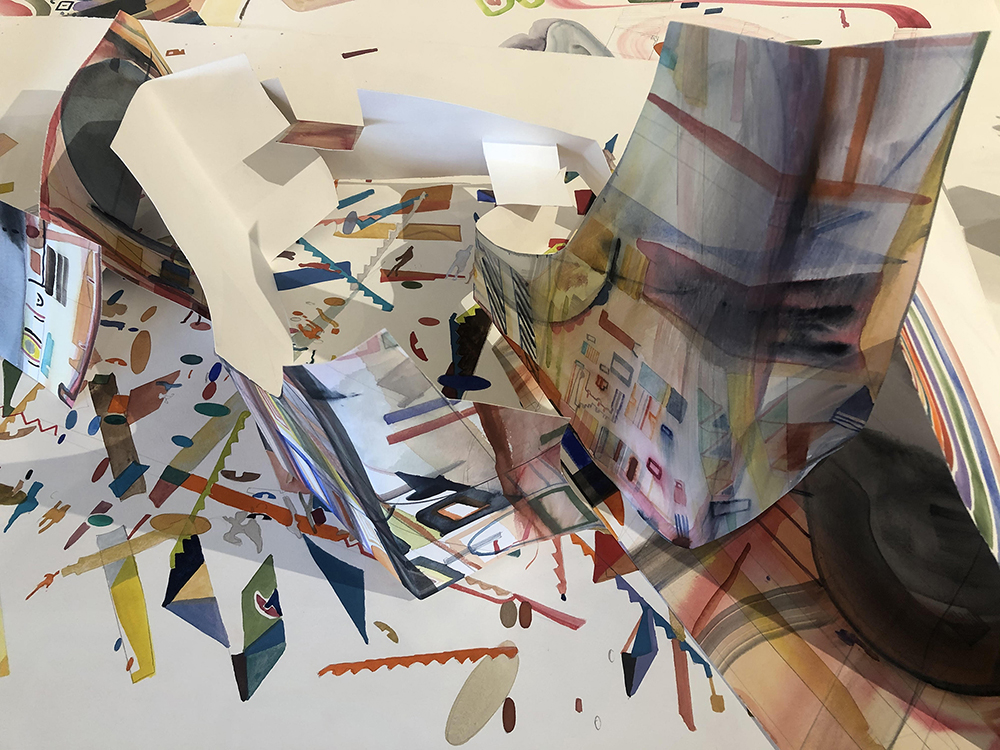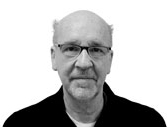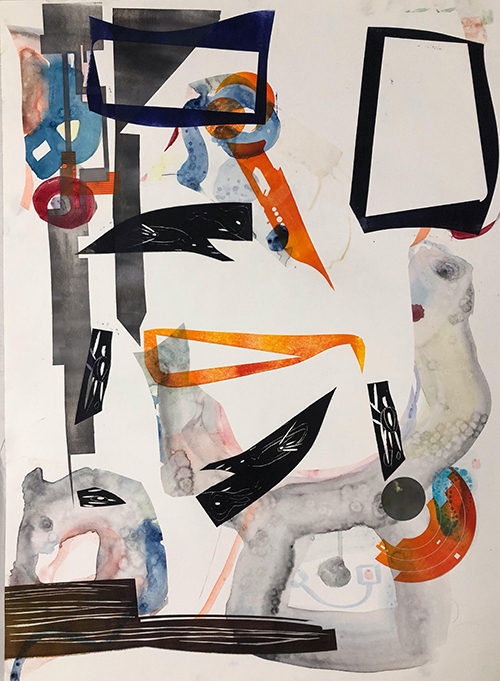
“Paper Tower,” watercolor cut and folded paper, 50 inches by 34 inches, 2020. (SUPPLIED IMAGE)

PAUL KRAINAK
• • • • • • •
PK: Carmon, you were one of the first print and drawing people I knew who fully embraced digital technology. Your experimentation was never escapist, but it had a remarkable effect on the way you grounded composition. Structure and pattern fluidity became more dominant, whereas figuration had previously held that position.
CC: It is an interesting observation. I saw the computer as a tool in 1985 –– another way to manipulate, distort, repurpose and translate images so I could work quicker and make more interesting prints. It seemed a natural extension of printmaking processes where I was using Xerox transfers to facilitate drawings on stone or plates. Combining new and old technologies was an exciting way to layer images, creating unexpected, often awkward mash-ups. I am interested in hybridity but more importantly creating a woven image or palimpsest, more than a collage, fusing layers and having traces of the earlier source as a referent. I only used the computer for quick, efficient appropriations. The figure did play a role early but over time seemed too limited. It’s been replaced by abstraction, not as stand in, but to create a more radical composition as you suggest. This led me to move off the rectangular frame into folded, 3-dimensional images.
PK: I agree that a palimpsest is a more apt way of approaching your work. It raises the issue of image as text and the process of adding and subtracting fragments of signs. Is that derived from years of working on a press? If so, how does it extend to the more recent large-scale wall relief work?
CC: My work on the press has a very definite impact on all my work and the palimpsest is a direct result. The translucent nature of printing ink makes it nearly impossible to completely cover up the image underneath. There’s always some ghost or trace of the image and the recycling of printing elements and images is an integral aspect of developing a visual language. The palimpsest also offers multivalent meanings at play in my technical and conceptual process.
I started printing on both sides of the print and folding the paper; revealing and concealing images, information and meanings. The infinite abstraction “paintings” are digitally printed on pre-primed canvas playing with the history of both mediums. I started working on the back in this case with acrylic paint on raw canvas, then cutting and folding them into sculptural shapes to explore the conceptual, physical and symbiotic relationships of analogue and digital. I really like the semantic interplay, and while linguistic, it allows for a framework to synthesize and weave new physical and visual forms. I want the work to be free from easy association, yet address a lineage of geometric and gestural abstraction, to produce a coherence that addresses the materials and the avant-garde, past and present.
Carmon Colangelo is the Ralph J. Nagel Dean and E. Desmond Lee Professor for Collaboration in the Arts, Sam Fox School of Design & Visual Arts at Washington University in St. Louis. He’ll have his 12th solo exhibition at Bruno David Gallery in St. Louis in September.

“This or That,” monotype, 22 inches by 30 inches, 2021. (SUPPLIED IMAGE)

Recent Comments